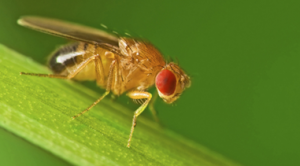Large offspring syndrome (LOS) is a fetal overgrowth condition that mimics the human syndrome Beckwith–Wiedemann. These conditions have been observed with higher incidence in offspring conceived with the use of assisted reproductive technologies and are believed to be the result of misregulation of a set of genes that are expressed only from the maternally or paternally inherited chromosomes. These genes are known as imprinted genes. In our study, we demonstrate that the kidney, brain, muscle, and liver of LOS fetuses show misregulation of multiple imprinted genes when compared with controls.
Mitigating thermal stress through evolutionary adaptation or physiological plasticity is critical for species’ persistence in changing climates. Sparse knowledge of genetic and physiological architectures of thermal plasticity hampers our ability to predict organismal resilience to climate change. Understanding the independence of short- and long-term plasticity and constraints of basal thermotolerance on plasticity is important for understanding responses to climate change.
Capsaicinoids, including capsaicin and its analogs, are responsible for the pungency of pepper (Capsicum species) fruits. Even though capsaicin is familiar and used daily by humans, the genes involved in the capsaicin biosynthesis pathway have not been well characterized. The putative aminotransferase (pAMT) and Pungent gene 1 (Pun1) proteins are believed to catalyze the second to last and the last steps in the pathway, respectively, making the Pun1 protein the putative capsaicin synthase.
Hundreds of wild-derived Drosophila melanogaster genomes have been published, but rigorous comparisons across data sets are precluded by differences in alignment methodology. The most common approach to reference-based genome assembly is a single round of alignment followed by quality filtering and variant detection. We evaluated variations and extensions of this approach and settled on an assembly strategy that utilizes two alignment programs and incorporates both substitutions and short indels to construct an updated reference for a second round of mapping prior to final variant detection.
Paramyxoviruses, the cause of many important human and animal diseases, constitute a large family of enveloped negative-stranded RNA viruses including parainfluenza virus 5 (PIV5). The virion RNA is associated with ∼2,600 protomers of N-protein in the form of a helical ribonucleoprotein (RNP) (nucleocapsid). The RNP serves as the template for the viral polymerase in vivo. When expressed, N forms a 13 member N-ring that resembles the building block of the RNP. We have determined the atomic structure of the N-ring from PIV5 with 78 bound RNA residues. Precisely, six nucleotides of RNA are associated with each N protomer.
Arachis hypogaea L. (cultivated peanut) is an allotetraploid (2n = 4x = 40) with an AABB genome type. Based on cytogenetic studies it has been assumed that peanut and wild-derived induced AABB allotetraploids have classic allotetraploid genetic behavior with diploid-like disomic recombination only between homologous chromosomes, at the exclusion of recombination between homeologous chromosomes.
Protein kinase A (PKA) complexes are versatile signaling enzymes controlling homeostasis in eukaryotes. This enzyme is involved in multiple functions under physiological and pathological conditions in humans and governs the virulence of many pathogenic fungi. Here we systematically identify PKA regulators in yeast. Notably, we describe signaling to PKA that involves feedback from the cellular recycling process, autophagy.
Self-incompatibility (SI) in plants prevents inbreeding by rejection of pollen from closely related individuals of the same species. Unilateral interspecific incompatibility (UI) blocks cross-hybridization between related species, typically when the pollen donor is self-compatible and the pistil parent is self-incompatible. In this study, we show that ui1.1, a pollen UI factor in tomato, encodes an S-locus F-box protein that is homologous to an SI gene that in Petunia determines pollen specificity.
Previous research using a bread wheat RIL population of the Seri/Babax cross showed that common QTL were associated with cooler canopies under both drought and heat-stressed conditions. A subset of RIL was grown under water-limited and hot-irrigated field environments to test how cooler canopies are related to root development. Eight sisters and the two parents were used in the study with genotypes grouped as COOL or HOT according to their respective QTL for canopy temperature and previous phenotypic data.
A study made by a team of researchers led by Atsuko Kinshita from RIKEN Center for Sustainable Resource led to the identification of a protein necessary in controlling root structure and is important in plant cell signaling pathway. This was done by closely examining the mutant Arabidopsis thaliana. The mutant A. thaliana is lacking plant U-box E3 ubiquin ligase (PUB-4).


 Curently online :
Curently online :
 Total visitors :
Total visitors :









